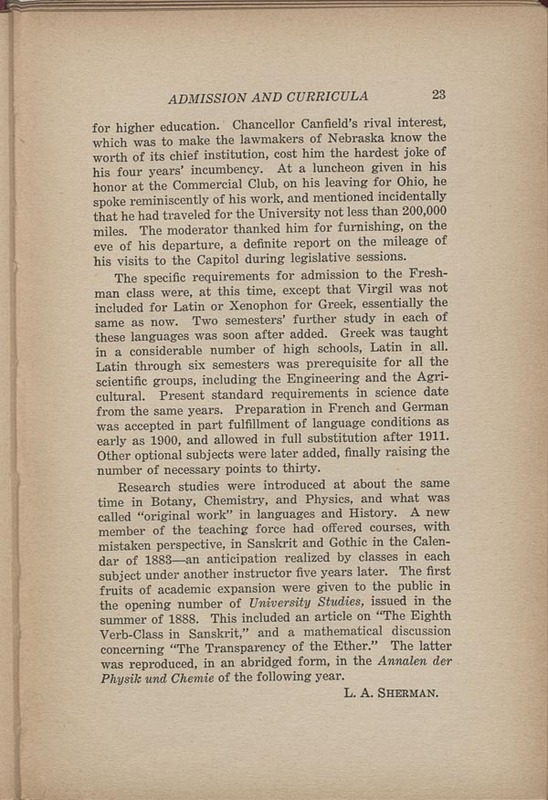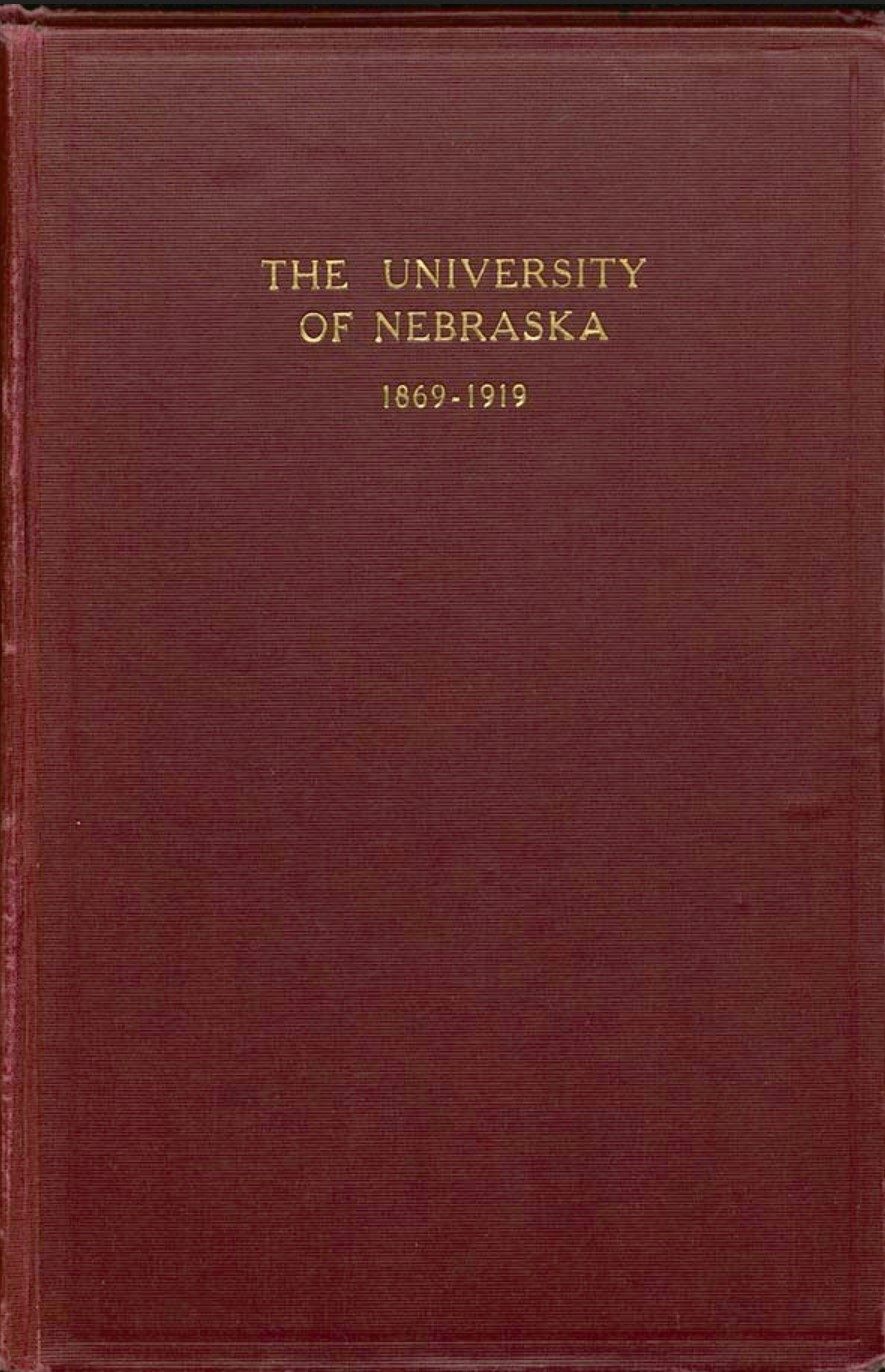027
Item
-
Title
-
027
-
Description
-
Semi-Centennial Anniversary Book: The University of Nebraska, 1869-1919
-
Transcription
-
for higher education. Chancellor Canfield's rival interest, which was to make the lawmakers of Nebraska know the worth of its chief institution, cost him the hardest joke of his four years' incumbency. At a luncheon given in his honor at the Commercial Club, on his leaving for Ohio, he spoke reminiscently of his work, and mentioned incidentally that he had traveled for the University not less than 200,000 miles. The moderator thanked him for furnishing, on the eve of his departure, a definite report on the mileage of his visits to the Capitol during legislative sessions. The specific requirements for admission to the Freshman class were, at this time, except that Virgil was not included for Latin or Xenophon for Greek, essentially the same as now. Two semesters' further study in each of these languages was soon after added. Greek was taught in a considerable number of high schools, Latin in all, Latin through six semesters was prerequisite for all the scientific groups, including the Engineering and the Agricultural. Present standard requirements in science date from the same years. Preparation in French and German was accepted in part fulfillment of language conditions as early as 1900, and allowed in full substitution after 1911. Other optional subjects were later added, finally raising the number of necessary points to thirty. Research studies were introduced at about the same the time in Botany, Chemistry, and Physics, and what was called "original work" in languages and History. A new member of the teaching force had offered courses, with mistaken perspective, in Sanskrit and Gothic in the Calendar of 1883—an anticipation realized by classes in each subject under another instructor five years later. The first fruits of academic expansion were given to the public in the opening number of University Studies, issued in the summer of 1888. This included an article on "The Eighth Verb-Class in Sanskrit," and a mathematical discussion concerning "The Transparency of the Ether." The latter was reproduced, in an abridged form, in the Annalen der Physik und Chemie of the following year. L. A. SHERMAN.
-
Rights
-
To inquire about usage, please contact Archives & Special Collections, University of Nebraska-Lincoln Libraries. These images are for educational use only. Not all images are available for publication.



